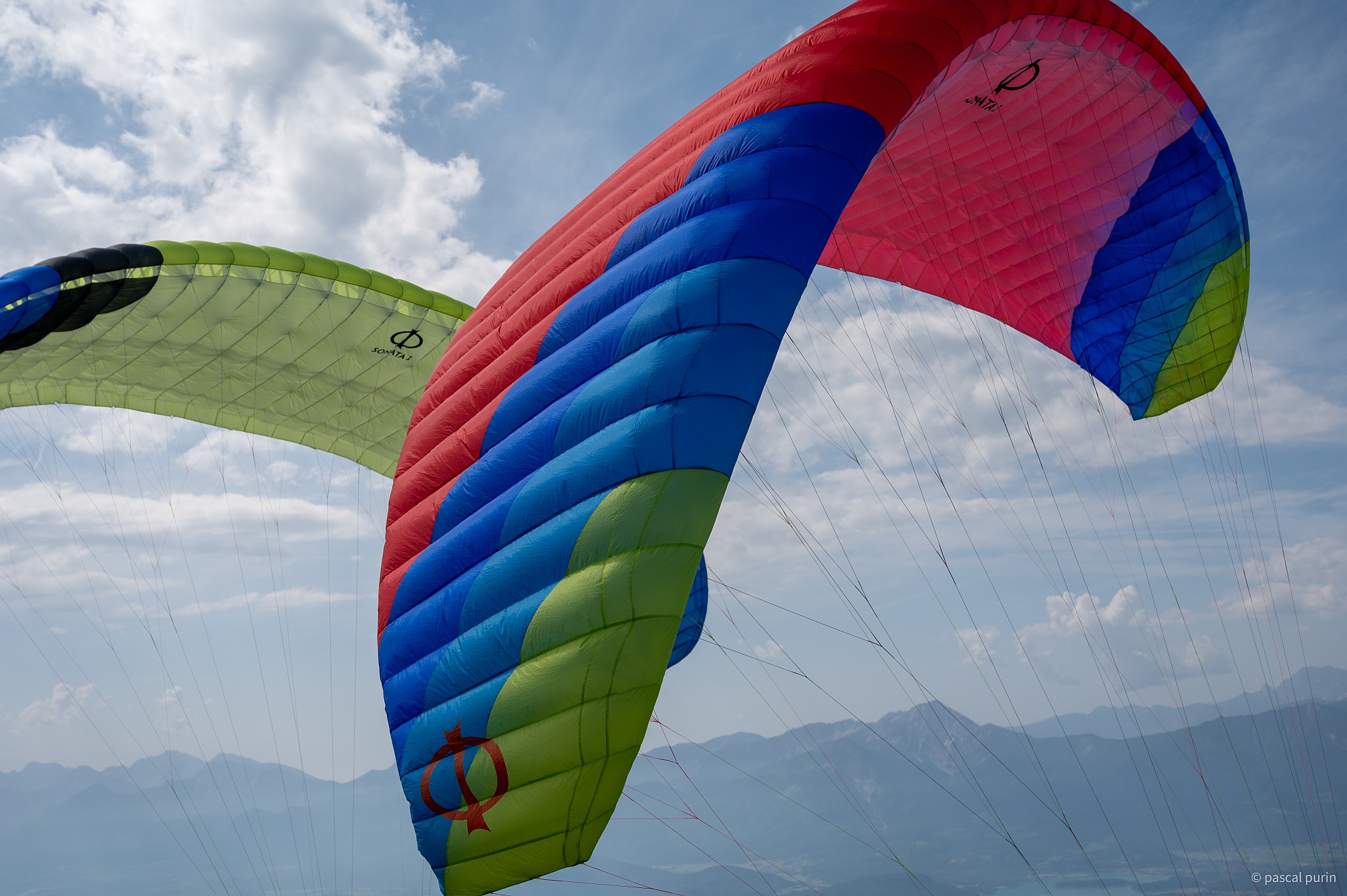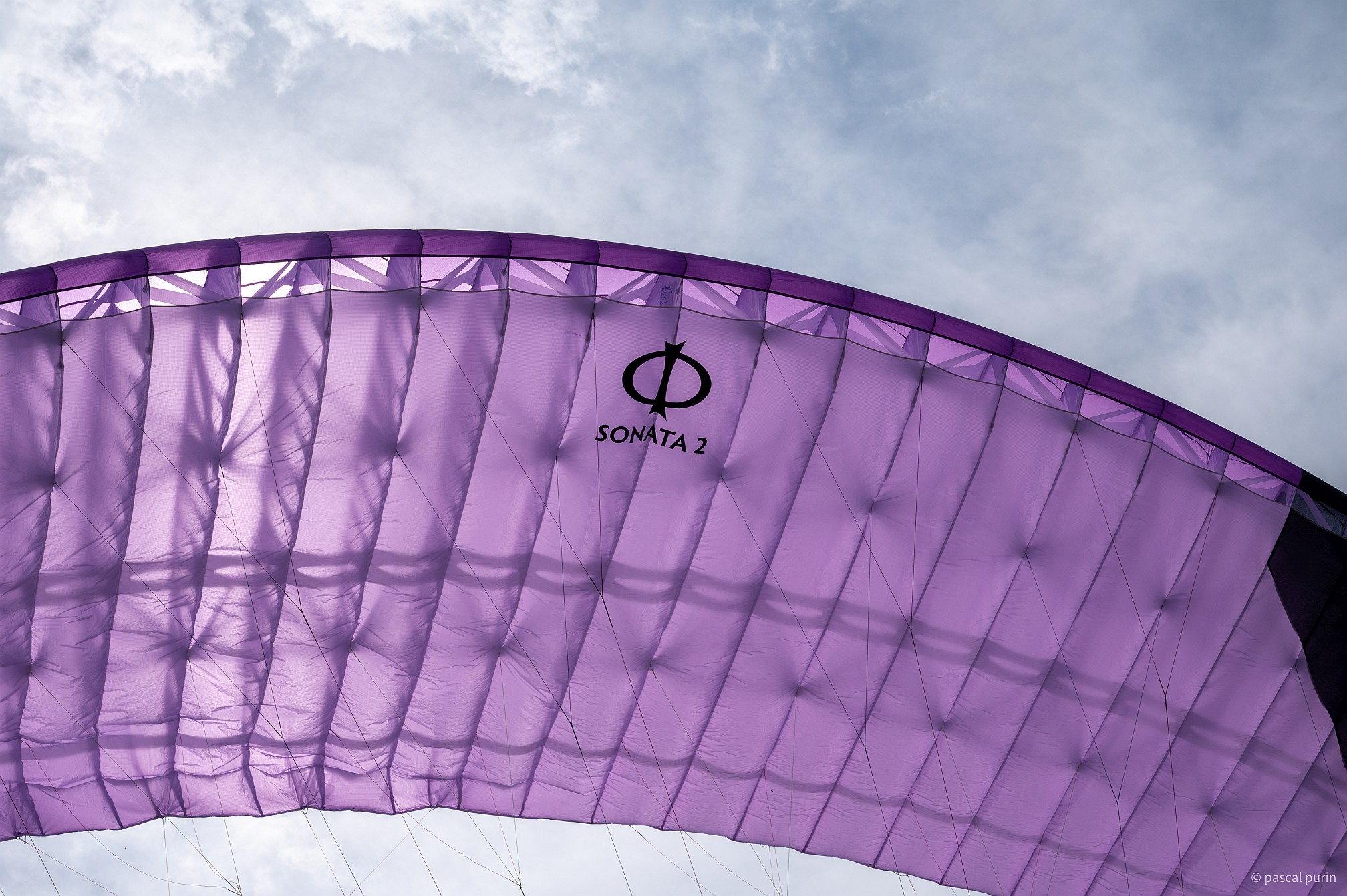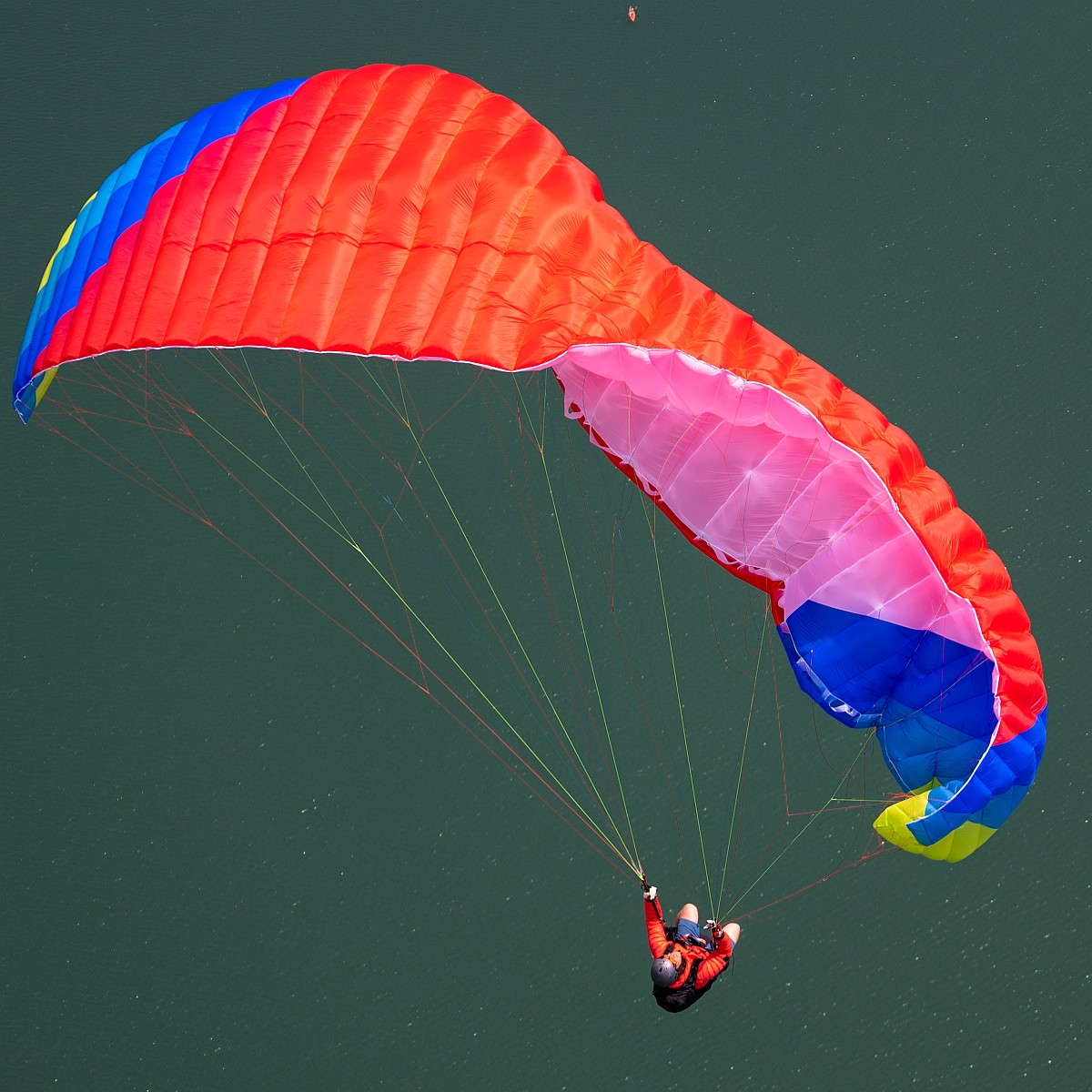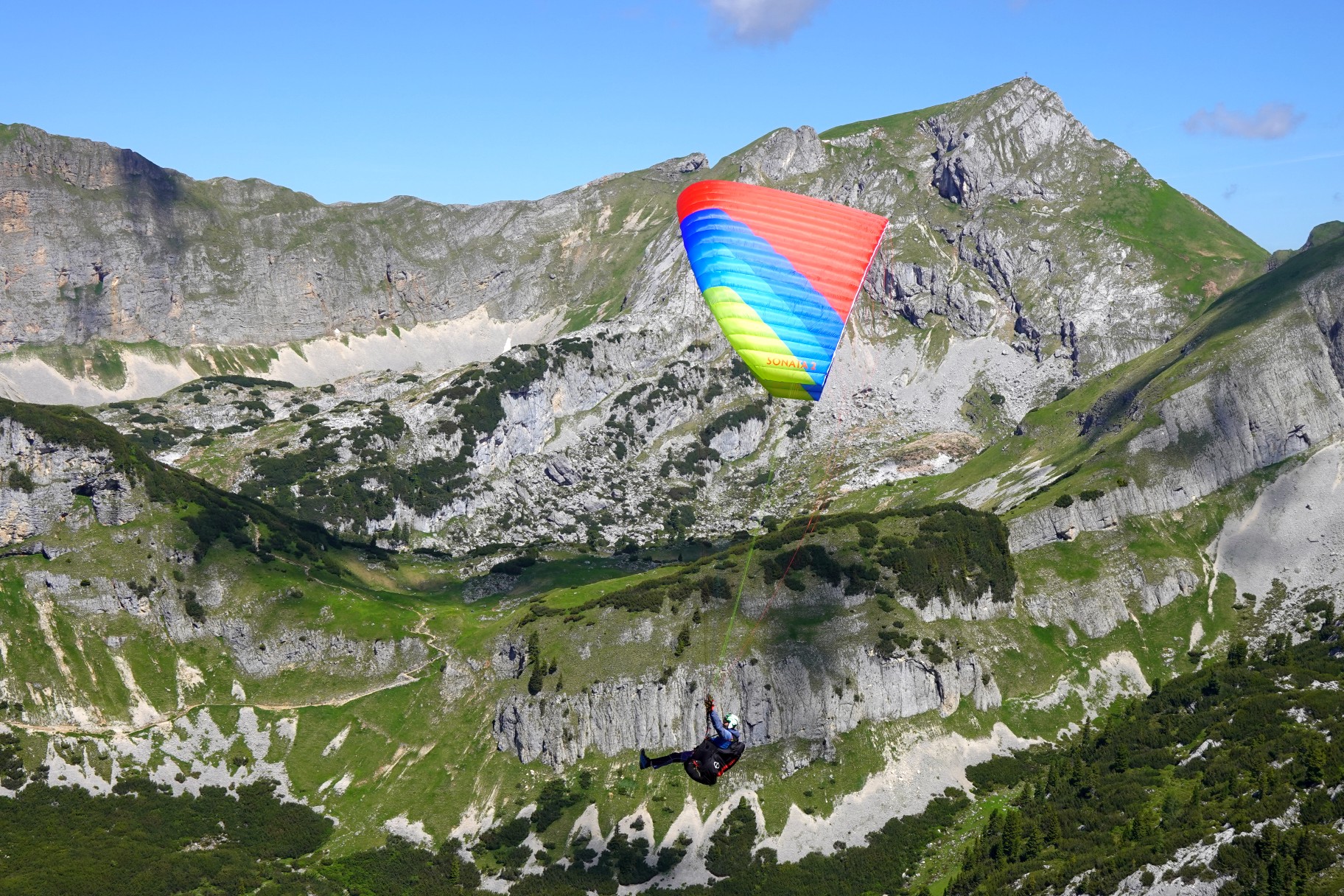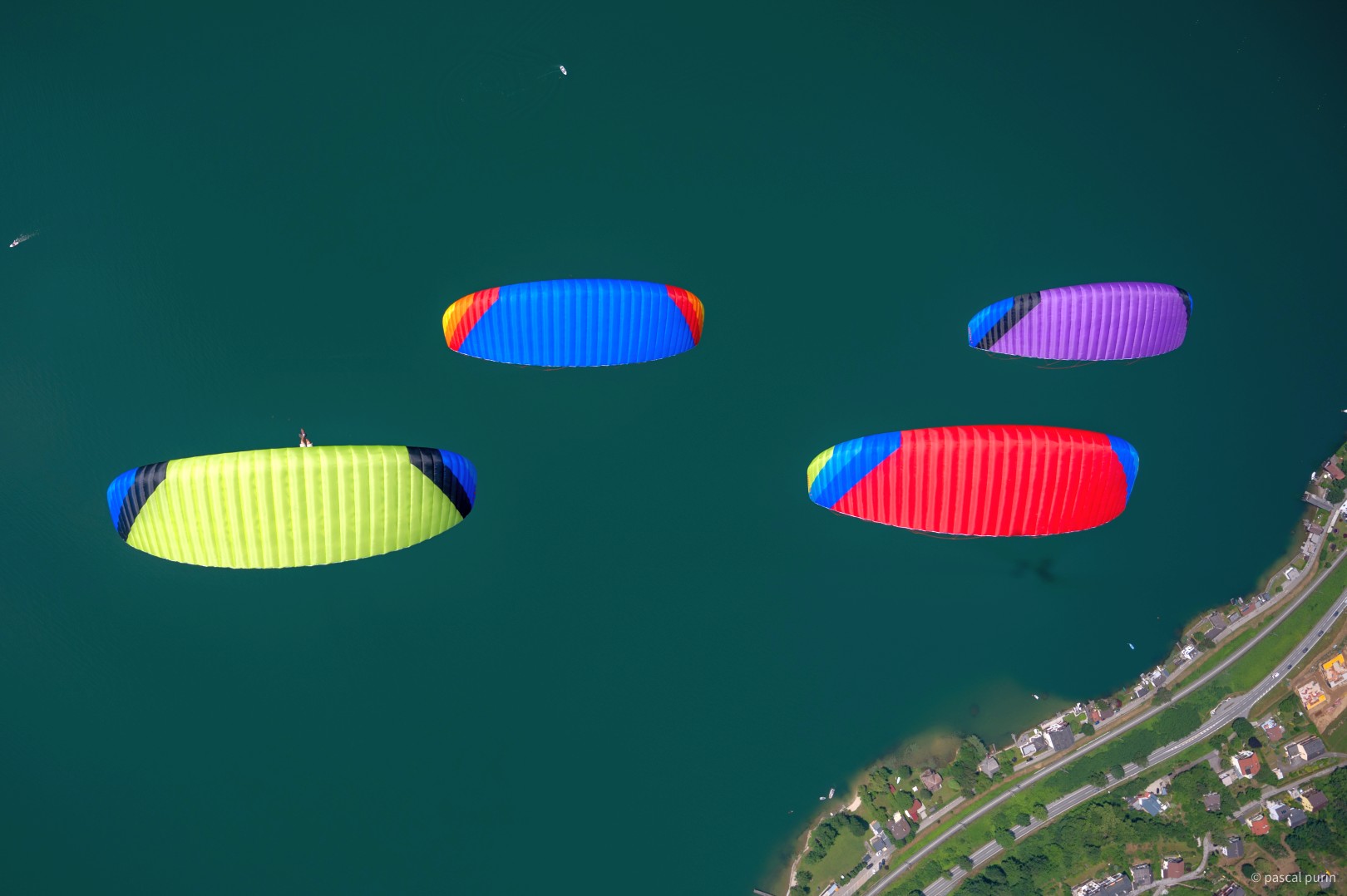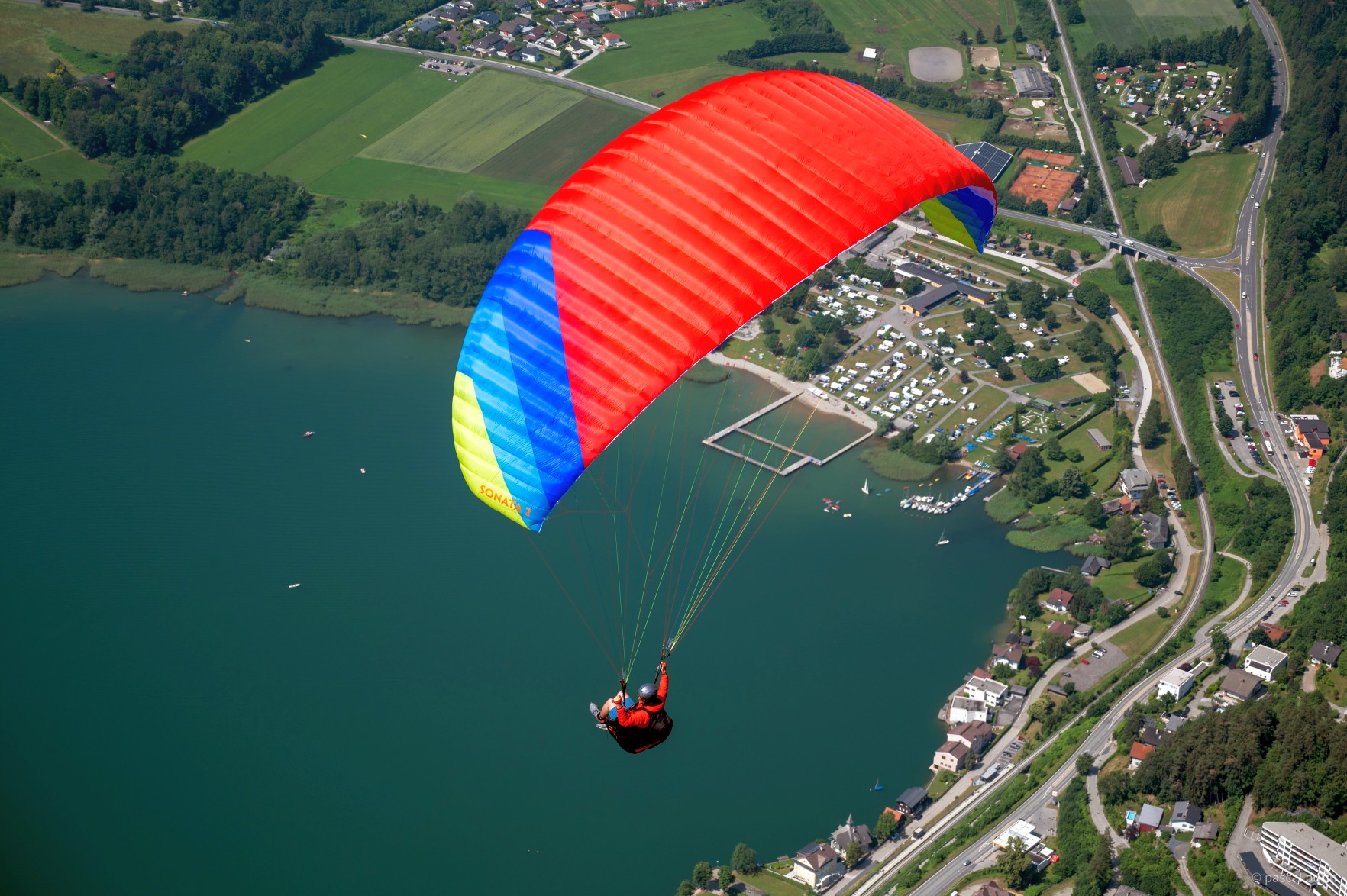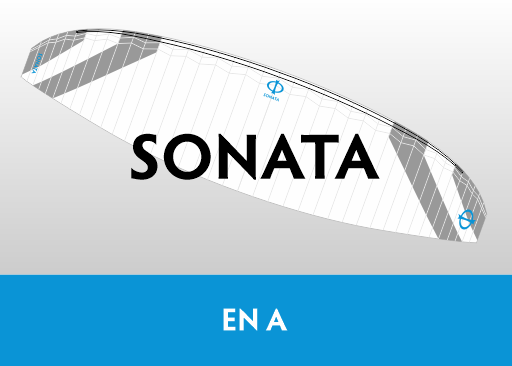The Cell number (40) and the ground shape (flat aspect ratio) are the same. The flat area is the same, but the canopy is more flat: the projected area is bigger. We kept the naming of the first generation for a better orientation, even the SONATA 2 24 has slightly more than 24qm projected: the projected area is 24.64qm.
To enable that less wing curve, the internal structure is more complex (much more diagonals) and the main lines increased from 2 to 3. The lines material changed in the main lines from the LIROS PPSL 275 to the newer PPSLS 180 (SK99). The less wing curve is improving the roll stability.
The canopy material changed from Dominico 40D to Skytex 38 / Easyfly.
The intake shape and the air foils changed, as well as the rods are new and on top and bottom of the leading edge. This was improving the inflation during take off a lot.
The risers are more modern, have less weight and have prints all over.






